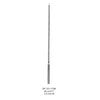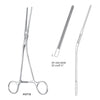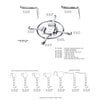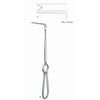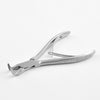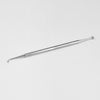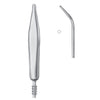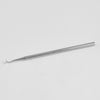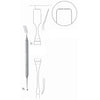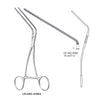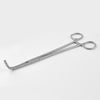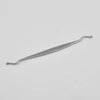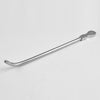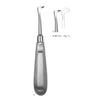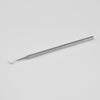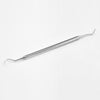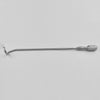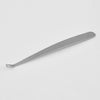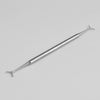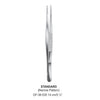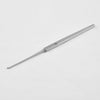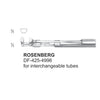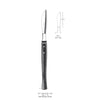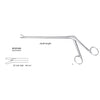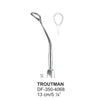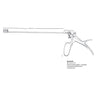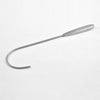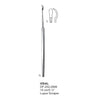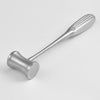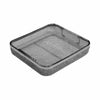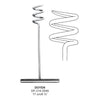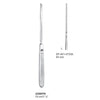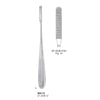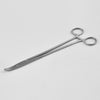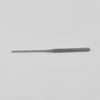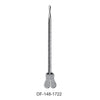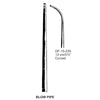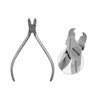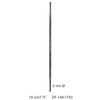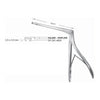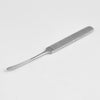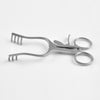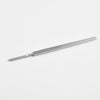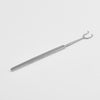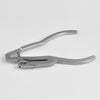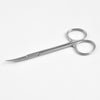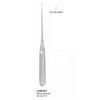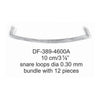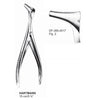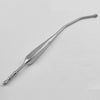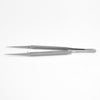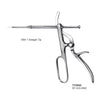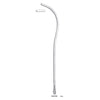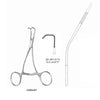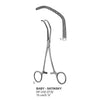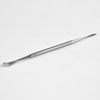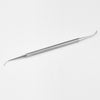How Many Types of Scissors Are Used in Surgery?

Surgeons and surgical assistants use scissors to cut tissues, dissect, and place sutures. Scissors may be designed to cut finer or heavier tissues and have straight or curved edges. There are certain types of scissors every surgical department and every surgical center keeps in inventory.
Iris Scissors
Iris scissors, also known as DeWecker's iris scissors and iris forceps, are scissors with very short blades originally developed for eye surgery. These scissors can be fitted with a cauterizing device for eye surgery on patients taking anticoagulants and for other situations where bleeding in the eye is a significant risk.Mayo Scissors
Mayo scissors are heavy tools designed for cutting tissues and sutures. Mayos can have straight or curved edges. Scissors with straight edges are used for trimming sutures, while scissors with curved edges are used to cut through tissue. As the name suggests, these scissors were designed by surgeons at the Mayo Clinic.Most Mayo scissors are made from stainless steel and intended for disposal after surgery. They do not have to be sterile. Mayo scissors intended for repeat use are usually made from titanium.
These scissors come in two sizes, standard and extra-long, between 6 and 6.75 inches (150 and 170 mm) in length.
Metzenbaum Scissors
American oral and reconstructive surgeon Myron Firth Metzenbaum designed his eponymous scissors in the first half of the twentieth century. Easy to recognize because the shank is about twice as long as the blade, Metzenbaum scissors are used for cutting delicate tissues. They can be straight or curved, but the tips are almost always blunt.Metzenbaum scissors are also known as Metzenbaum–Lahey forceps. They are the most common kind of surgical scissors used in organ surgery.
Potts Scissors
Pott's scissors, also known as Potts Smith scissors, are fine scissors used for making incisions in blood vessels. In the first half of the twentieth century, American pediatric surgeon Willis John Potts, founder of the first pediatric surgical hospital in the United States, developed a surgical procedure for blue baby syndrome known as the Potts shunt. Among the tools he developed for the procedure are Potts scissors.
Potts-Smith scissors usually have probe tips to enable tissue exploration without additional trauma. They can have multiple cutting blades. Their long shanks optimize control of the blade.
While the previously mentioned four kinds of surgical scissors are found in almost every operating room worldwide, there are many more kinds of scissors for specialized uses.
- Barre vascular scissors have beveled blades for easier cutting through internal organs and for the dissection of blood vessels during cardiac surgeries.
- Beckmann nasal scissors are used for tissue dissection in narrow spaces. They are most commonly used for the removal of nasal masses.
- BeeBee crown scissors feature long shanks and short blades for cutting tough tissues. The blades may be angled to reach deep tissues.
- Bone shears cut through tough tissues to reach internal organs. They usually have grip handles for superior control.
- Bowel dissecting scissors have angled blades for a better view of the dissecting field. Longshanks permit greater deep tissue access.
- Castroviejo corneoscleral scissors feature extremely delicate blades for ophthalmic procedures such as cataract surgery and iridectomy. Fenestrated handles provide a better grip.
- Cinelli dissecting scissors are designed to cut through tough tissues such as the nasal bridge in plastic surgery. They have blunt tips to prevent accidental soft tissue trauma.
- Debakey vascular scissors are used to accomplish sharp dissection of delicate tissues. Cardiovascular surgeons use them for vein removal in bypass operations.
- Delicate gum scissors provide an ergonomic ring to reduce fatigue during gum surgeries. The beveling of the blades permits easier dissection.
- Fine micro scissors feature a fenestrated handle for better grip during delicate ophthalmic procedures. They are a common tool for squint repair.
- Fine-operating scissors offer short blades for precise dissection. Dual tip configuration enables sharp and blunt dissection.
- Heavy wire-cutting scissors cut either internal or external sutures. They feature short, rounded blades.
- Incision scissors are multi-purpose scissors. They have sharp and blunt tips as needed for the incision.
- Jameson supercut dissecting scissors feature a no-slip mechanism for better control during vascular and cosmetic procedures. They typically have extremely sharp blades.
- Plaster of Paris shears are used to remove casts.
- Schumacher umbilical cord scissors are essential for every obstetrics department. These scissors are used without clamps for tying the umbilical cord.
- Yasargil Vannas micro scissors have bayonet-shaped shanks that improve visibility paired with sharp blades to accomplish fine dissection.
- Zurich nasal scissors come with alligator-like jaws for accurate cutting.
These are just a small sample of the hundreds of surgical scissors available from surgicalinstrument.com.
How to Ensure Your Surgeons Have Scissors of Superior Quality
As we mentioned earlier, some surgical scissors are designed to be discarded after a single use. Others go through cleaning, and the autoclave is to be used in another operation on another patient.To ensure the usefulness of surgical scissors, it is imperative to make a full inspection after each use and cleaning.
Here are some common features of surgical instruments and what to look for:
- The two sides of surgical scissors with a box joint should be symmetrical.
- Serrations on alligator jaws should be shaped identically so they mesh exactly.
- When pressure on scissors or prongs is released, the serrations or teeth must not catch each other.
- Ratchets must not come disengaged during use.
- Any ratchet should be the same thickness as the shank.
But there is a simple way to keep these issues to a minimum.
Always Buy Surgical Scissors from Ethical Suppliers
Let surgicalinstrument.com be part of your quality assurance team. We are a reseller of surgical instruments manufactured to ISO, ASTM, FDA, CE, DIN, and IEC standards—and when your surgeons need custom-made surgical instruments manufactured to the same high standards, we can tool them in-house.Because of our vast volume of surgical instruments, we offer the highest-quality tools at extremely competitive prices delivered worldwide. Contact us for more information.



